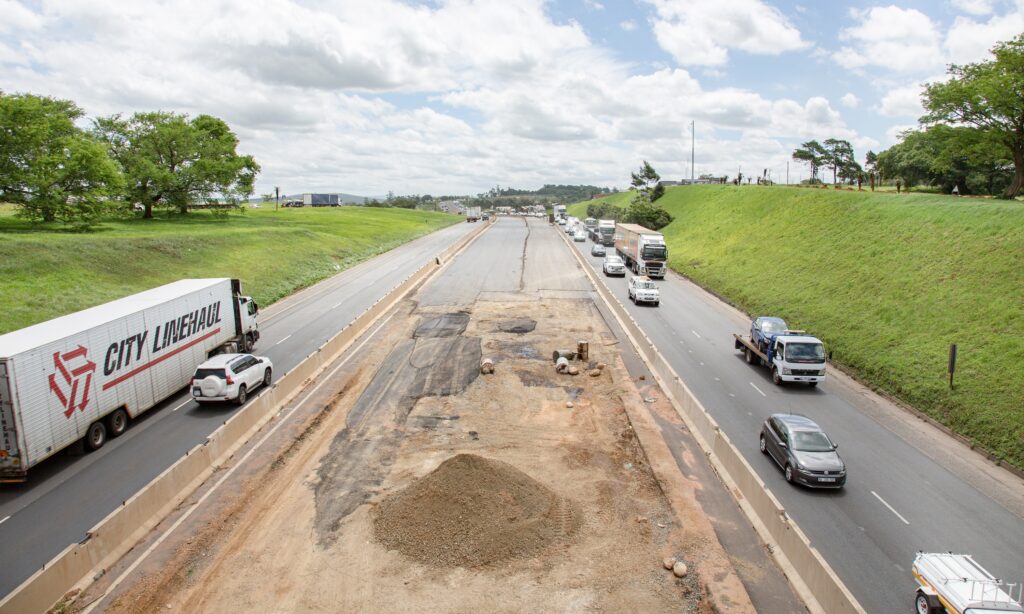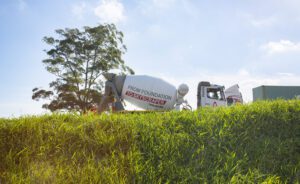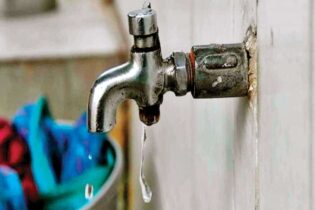Raubex has been working on a 4 km stretch of the N3 highway, between Dardanelles and Lynnfield Park since January 2021, which will expand the current two-lane road to four lanes in each direction.
As part of extensive upgrades to one of South Africa’s most vital highways, JSE-listed contractor Raubex Construction is being supplied with construction material by AfriSam, including cement, readymix, aggregate and other quarry material. The N3 between the port city of Durban and the country’s powerhouse of Johannesburg carries heavy traffic volumes that have only increased in recent decades. This project is part of government’s key Strategic Integrated Project focusing on the Durban-Free State-Gauteng logistics and industrial corridor. It will improve access to Durban’s export and import facilities, and raise efficiency along this route. According to Abri Lubbe, contracts manager, Raubex, the road contract includes the widening of four existing bridges and the construction of an entirely new road-over-road bridge structure at the Umlaas Road junction. This new twin-spine bridge over the R603 will allow easier access for both north- and south-bound N3 traffic heading for Richmond.Bridges
“Work on widening the bridges at the Umlaas and Sunnyvale underpasses has been completed, as has the agricultural underpass,” says Lubbe. “This involved the construction of abutments, the application of precast beams, in situ decks, balustrades and end-blocks.” There is also one road-over-rail bridge that will be extended once the contraflow stage is reached, where traffic is diverted on to one side of the highway to give contractors full access to the other side. Piling for the twin-spine bridge has been completed, allowing the foundations to progress on this lengthy aspect of the project; work began on this three-span structure in October 2021 and is due for completion by the end of 2023. Thys Greeff, construction manager, Raubex, explains that the contraflow will allow roadwork on the south-bound lanes to begin in earnest, which will include the complete revamp of the existing lanes.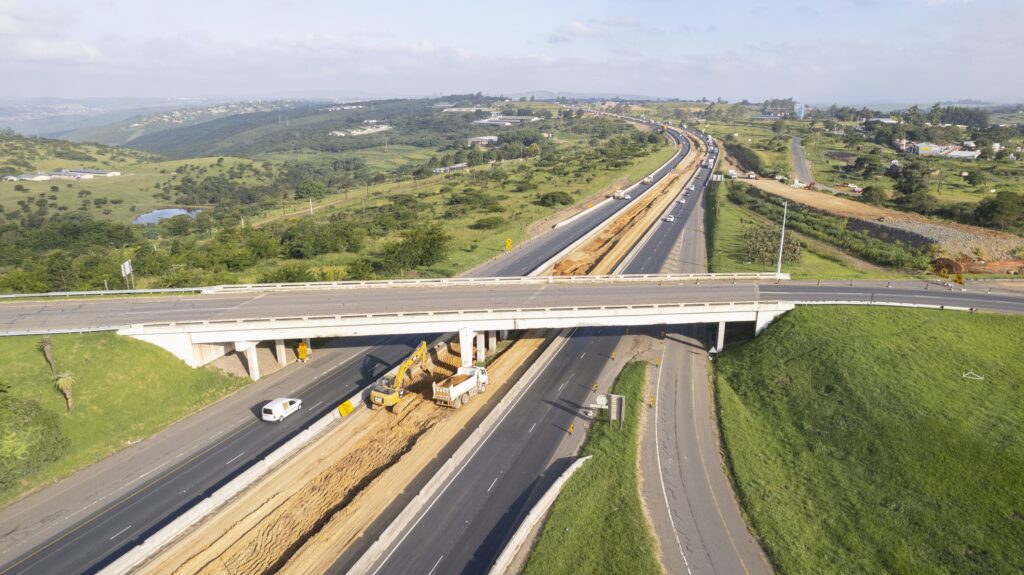
Road construction
“We are excavating the existing road by between 1 000 mm and 600 mm, and will fill this with blasted material from AfriSam,” says Greeff. “Depending on conditions, the next level may then comprise a 150 mm capping layer and a 300 mm G6 selected layer. This is followed by a 350 mm stabilised sub-base layer of crushed material.” AfriSam is providing its specialised road-stabilising cement, Roadstab Cement, which is being supplied in 50 kg bags to the Raubex subcontractor who spreads the cement on to the sub-base layer. By the end of the contract, around 180 000 bags will have been supplied, making up some 9 000 t of cement. The road layer will be completed with a 200 mm asphalt layer, comprising a 120 mm EME base, a 40 mm AP-1 interlayer, and a 40 mm bitumen-rubber gap-graded wearing course, says Greeff. To date, the ramp from the N3 on to the P338 road heading west towards Thornville has also been completed, with just the asphalt layer being finalised. The project is currently busy with three other ramps and two temporary ramps and cross-overs to accommodate traffic. Adding another two lanes – and sometimes three – on each side of the highway has meant taking up the central reservation that has always existed between the north- and south-bound highways. In its place will be a concrete median barrier, mostly of precast concrete units. “In addition to the precast barriers, there will also be sections of the median barrier that will require readymix to be poured in situ,” says Lubbe. “This will be done where the road is in a superelevation, or where the camber points – or pivot points – differ on the north- and south-bound roads.”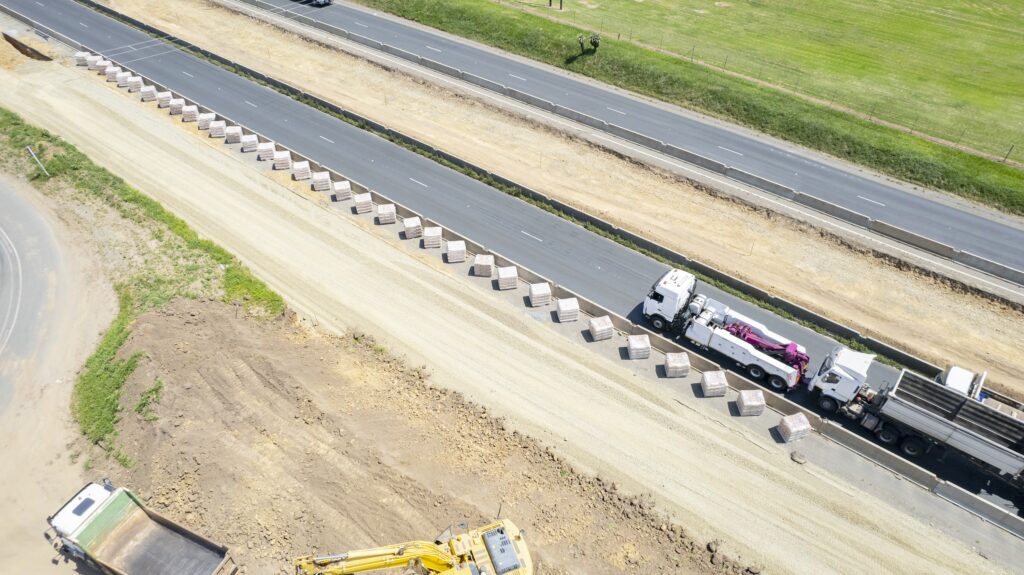
Supply line
According to Randal Chetty, regional sales manager, AfriSam, the readymix supply will come from AfriSam’s plant at Umlaas Road – conveniently located as part of the company’s extensive national footprint. To date, over 300 000 tonnes of construction material – including unselected fill, blasted G6 material and 20 mm aggregate – has been supplied.
“We also have a quarry at our Pietermaritzburg facilities, which will provide us with backup supply if there is a need,” says Chetty. The scale of the various upgrading projects on the N3 in this region is putting considerable pressure on the capacity of suppliers in the area, says Lubbe. There are currently three overarching road upgrade projects under way between Cato Ridge and Ashburton.Readymix
On the readymix side, AfriSam’s plant at Umlaas Road will be supplied with aggregate material from the quarry that shares this location. “Planning ahead for the eventuality that aggregate must be sourced from both quarries, we have concrete mix designs for Umlaas Road and for Pietermaritzburg material,” says Chetty. “These have been accepted by the engineers, the contractor and subcontractors.” He highlights that planning is critical in large projects like this one, to ensure adequate and timeous supply of both blue and brown material to where it is needed on the roadside. This includes understanding the timeframes and planning for the project peaks. With regard to the readymix supply, AfriSam has already begun stockpiling the 20 mm aggregate and river sand.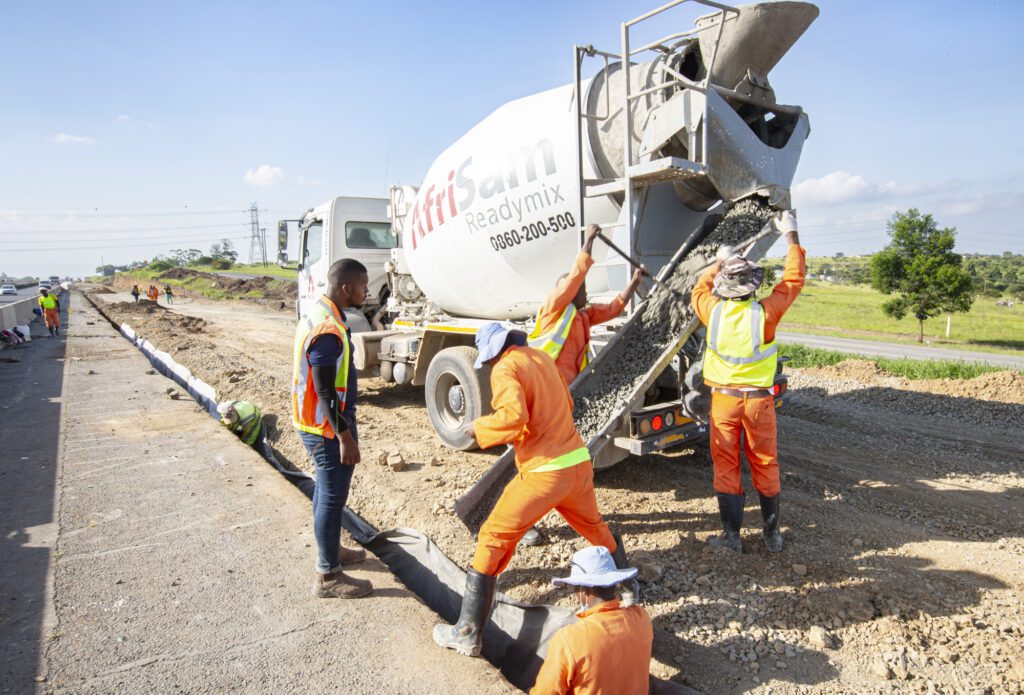
Hands on deck
The project is demanding considerable human resources – from Raubex’s on-site team to its subcontractors and local workforce. Lubbe notes that there will be 300 to 350 personnel on-site by the time the project peaks, around August to October this year. The majority of those are workers from the local area, in whom Raubex has invested significantly in skills, safety and other training. Greeff highlights the range of equipment being deployed to keep the work streamlined and efficient. This includes four graders, each served by two compacting rollers and 42 tipper trucks with loading capacity of 10 m3 each. A Cat reclaimer is at work on the sub-base, and a specially engineered barrier truck moves the weighty 6 m temporary concrete barriers to control traffic flow. Water bowsers assist with dust suppression and dampening the road layers, and a fixed asphalt plant has been installed near the quarry at Umlaas Road. The roadwork on this project is likely to be completed by mid-2024, with some of the ramps and other infrastructure possibly taking until early 2025.Contactless system
Lubbe emphasises that the tender process for local subcontractors – in terms of the company’s contract participation goals – is highly structured. This is to ensure a fair bidding process that empowers suppliers and service providers in the local area. However, the Covid-19 pandemic, along with its restrictions on movement and meetings, presented a severe challenge to Raubex’s advertising of tenders to meet its contract participation goals. This was met by an innovative and unique solution – perhaps the first of its kind in the local construction sector. “To ensure compliance and social distancing, we were able to develop a transparent and contactless system,” he says. “Subcontractors would receive a link from us on their mobile phone or computer, and would go online to find all the details on that section of work.” They could then upload all their necessary documentation to tender their bid – avoiding the paper process and all the usual logistics that would require hard copies to change hands. So successful has the system been that the company is likely to use it well after Covid-19 restrictions have ended.